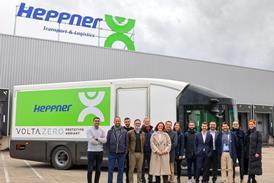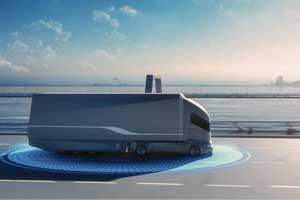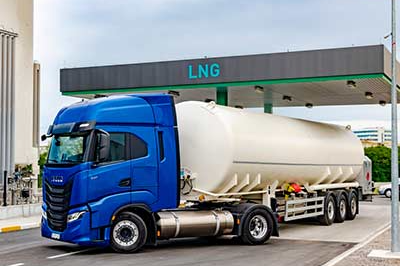
The saying “if the wheels ain’t turning, she ain’t earning” is the bedrock of the road freight transport industry. But if your fleet is electric, that may not be the whole picture in future.
A new sector has been establishing itself in GB’s electricity system over the last decade: battery storage. Great Britain now has 4,700MW of battery capacity, of which 1,000MW was added in 2024. For comparison, the two new nuclear reactors at the Hinkley Point C nuclear power plant will – when they finally start up - have a capacity of 3,200MW.
This is just the start for battery storage. The new national Energy System Operator (NESO), whose job is both to keep the electricity flowing within strict technical limits from minute to minute, and set out long term strategic requirements – says: “We hugely value the role batteries play today, helping to secure and balance the system in real time. There is a growing role for batteries in the future, with our forecasts seeing a need for four or five times the capacity we have today by 2030.”
These installations don’t look like power stations. They look like an array of shipping containers parked next to each other. Each is filled with thousands of battery units and large projects are a matter of adding more containers on the site. They have generally been built on brownfield land and they have been hugely successful.
Why is this of interest to freight operators with battery vehicles? Look at the income stream: battery owners are hoping to make annual revenues on the order of £100,000 per MW. And to the electricity system, a row of heavy freight vehicles with MW-scale charging may look very similar to any other battery array.
How do these revenues arise? Batteries are not about providing a reservoir of power for days or weeks. Instead, they have a variety of roles that help balance a system where the demand and supply of electricity both vary dramatically throughout the day (and so does the energy price). The simplest example is covering a short peak in demand (see box). Crucially, some roles can be performed together, allowing battery owners to ‘stack revenues’.
Some batteries have been built by familiar utility names, but because they are easy to build the growing sector has brought new players into the energy market. A battery array is quicker to build than a large power station – it can be done in months or even weeks instead of years – and the first phase of batteries on a site can be earning, even while later phases are installed. That has prompted a boom in this new sector from asset owners such as small groups of investors, who take the profit while the battery is built, commissioned and operated by a series of contractors.
One example is Harmony Energy Income Trust, highlighted here purely because of its informative report. It operates five battery arrays with capacity totalling 277.5MW (and storing 555MWh) in GB with more under construction. In the six months to 30 April 2024 it booked operational revenue of £8m in total, averaging £46,300 per MW annually in the first quarter and £68,700 per MW annually over the second quarter, according to its half-year results. It was able to take advantage of “multiple hours of negative wholesale power prices”, when batteries are remunerated for charging. (These periods are expected to become more frequent).
The potential revenue lines for batteries are helpfully detailed in Harmony’s report. They are:
• The Capacity Market, with contracts of up to 15 years. Projects receive an availability payment every winter, for being ready to respond to a period of potential energy shortfall.
• Wholesale electricity trading: buying wholesale electricity during cheap periods, storing it for a period of time and then selling when the price increases.
• The Balancing Mechanism: which applies from one hour before delivery of power, when NESO buys and sells electricity to balance, likely paying higher prices than the wholesale, in this “lucrative and growing market”.
• Ancillary services: payment in return for responding rapidly (either charging or discharging) to deviations in frequency of the electricity system.
• Balancing reserve: an advance availability payment for the Balancing Market.
Managing the battery level of charge to make the best out of these revenue lines is complex - but with a large number of battery-owning companies now around, services are available to optimise your battery on your behalf. With some learnings, they even ought to be able to optimise a site as trucks are swapped in and out to go on the road.
What is the lesson from this? While they are at rest, batteries can perform services to the grid, and electric vehicle batteries should be no different. The fear of the freight industry is that the time required to charge battery-powered HGVs is nothing but a cost – but in the electricity sector, a stationary battery is a moneymaking proposition.
Should the two sectors be talking?
Would you stop the wheels turning for an hour for £11,999,999?
Imagine if the price of diesel went up according to the queue at the pump? That’s the case in the electricity market, where the need to increase power supplies at tea time (or suddenly, when the kettles go on after the end of The Traitors) means more expensive power plants are called on.
We used to run power stations in neutral so they could be quickly brought on line in response. That option was needed on one occasion in January ,when NESO foresaw that the cushion of supply over demand would be low for an hour or two. It had to call on two gas fired plants – but to be on call in the period, the plants first had to spend hours being started, warmed up and made ready to come online, and then cooled down afterwards. The total cost was some £12m for the short period when the plants were required.
This makes batteries immediately attractive. They can be started up (and shut down) much faster. They can be charged up when prices are low and held ready for peak periods, which are increasingly predictable as the dispatch period approaches.
If they can step in for the necessary hour or two, for less than the £12 million bid accepted by NESO from gas plant, they would benefit and so would customers, who would pay less and see lower carbon emissions. Increasingly that is the options called on by the system operator.










